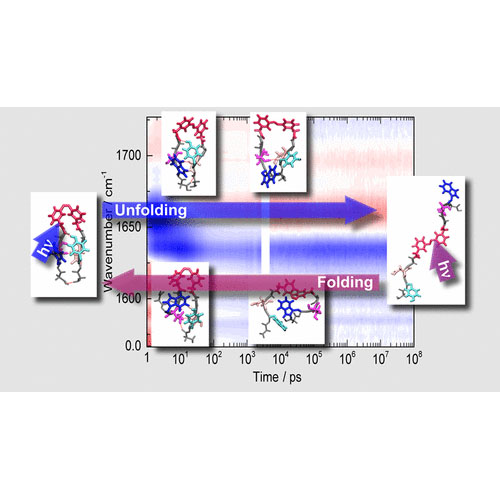Folding and Unfolding of the Short Light-Triggered β‑Hairpin Peptide AzoChignolin Occurs within 100 ns
2020-06-01
Stefan M. Hofmann, Christina V. Frost, Tom Podewin, Manuel Gailer, Elisa Weber, Martin Zacharias, Wolfgang Zinth, Anja Hoffmann-Röder
To map the underlying molecular mechanisms of folding dynamics in proteins, light-operated peptides have emerged as promising tools. In this study, we reveal the complete sequence of light-induced structural changes of AzoChignolin, a short β-hairpin peptide containing an azobenzene photoswitch in its loop region. Light-triggered structural changes were monitored by time-resolved IR spectroscopy. Formation and destruction of the hairpin structure is very fast and occurs within 100 ns for AzoChignolin in methanol. Atomistic molecular dynamics simulations using two explicit solvents, methanol and water, revealed the underlying molecular processes and allowed us to gain further insight into the reaction mechanism. Despite its rapid reaction time, hairpin formation in these solvents is not force-driven by the molecular switch but proceeded via formation of interstrand hydrogen bonds and contacts between aromatic residues. Moreover, the combined experimental and theoretical study demonstrates that the solvent (methanol vs water) does not dictate the velocity of β-hairpin formation in the AzoChignolin peptide comprising only a few hydrophobic residues in the strands.








